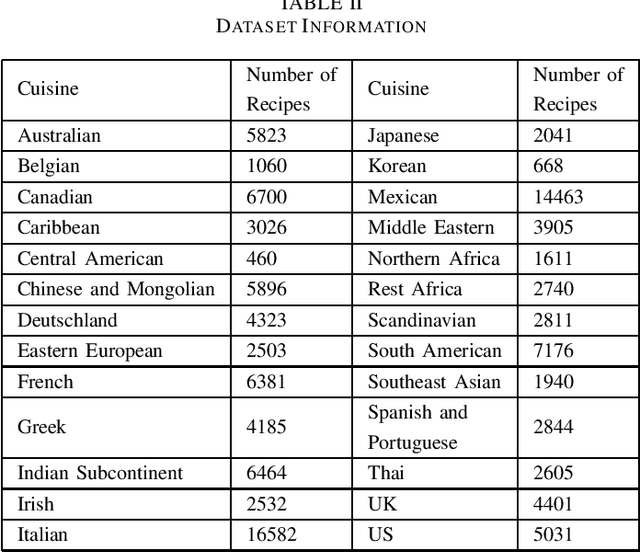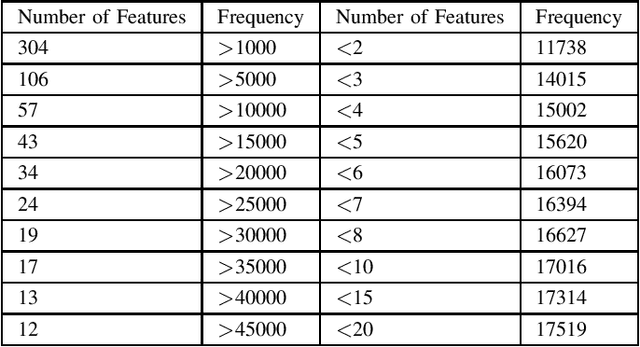Classification of Cuisines from Sequentially Structured Recipes
Paper and Code
Apr 26, 2020



Cultures across the world are distinguished by the idiosyncratic patterns in their cuisines. These cuisines are characterized in terms of their substructures such as ingredients, cooking processes and utensils. A complex fusion of these substructures intrinsic to a region defines the identity of a cuisine. Accurate classification of cuisines based on their culinary features is an outstanding problem and has hitherto been attempted to solve by accounting for ingredients of a recipe as features. Previous studies have attempted cuisine classification by using unstructured recipes without accounting for details of cooking techniques. In reality, the cooking processes/techniques and their order are highly significant for the recipe's structure and hence for its classification. In this article, we have implemented a range of classification techniques by accounting for this information on the RecipeDB dataset containing sequential data on recipes. The state-of-the-art RoBERTa model presented the highest accuracy of 73.30% among a range of classification models from Logistic Regression and Naive Bayes to LSTMs and Transformers.
 Add to Chrome
Add to Chrome Add to Firefox
Add to Firefox Add to Edge
Add to Edge